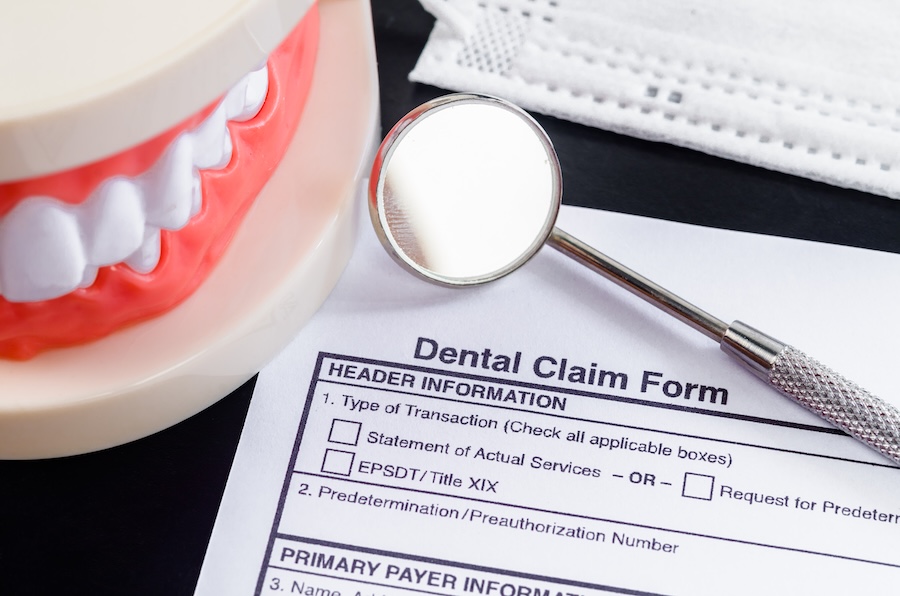
If you’re planning for a tooth extraction, it helps to know what your dental insurance might cover—and what those unfamiliar codes on your treatment plan actually mean. At Queensboro Plaza Dental Care in Long Island City, Dr. Michael Nguyen and Dr. Daniel Barayev believe in clear communication, so here’s a look at the most common CDT (Current Dental Terminology) codes used for dental extractions and what they really mean.
D7140 – Extraction, Erupted Tooth or Exposed Root (Elevation and/or Forceps Removal)
This is one of the most frequently used codes. It’s used when a tooth or an exposed root is fully visible and can be removed with simple tools like elevators or forceps—no surgical cutting required. This is sometimes referred to as a “simple” extraction, even though it might not feel so simple when you’re in the chair.
D7210 – Extraction, Erupted Tooth Requiring Removal of Bone and/or Sectioning of Tooth
Things get a bit more complicated here. This code applies when the dentist has to section the tooth or remove bone to get the tooth out. If the crown and root break apart or need to be taken out separately, and the procedure involves bone removal, D7210 is typically the correct code.
D7220 – Removal of Impacted Tooth – Soft Tissue
If a tooth hasn’t fully erupted and the chewing surface is still under the gum but not embedded in bone, this code applies. D7220 means the dentist needs to make a small incision in the gum to reach and remove the tooth. It’s considered surgical, but usually more straightforward than other impacted extractions.
D7230 – Removal of Impacted Tooth – Partial Bony
When a tooth is partially covered by bone, D7230 is the go-to code. The dentist needs to remove some bone to access and remove the tooth, making it more complex than soft tissue impactions. This is often the case for wisdom teeth that are partially stuck in the jaw.
D7240 – Removal of Impacted Tooth – Complete Bony
Here, the tooth is entirely encased in bone. D7240 is used when a full surgical approach is needed to remove the surrounding bone and carefully extract the tooth. These procedures tend to take more time and may involve more aftercare, especially with molars and wisdom teeth.
D7241 – Removal of Impacted Tooth – Complete Bony, With Unusual Complications
This one’s for more complex wisdom tooth cases. If the tooth is fully encased in bone and presents complications like nerve involvement, curvature of roots, or unusual positioning, D7241 is the appropriate code. It’s the most advanced surgical extraction listed here.
D7250 – Removal of Residual Tooth Roots (Cutting Procedure)
Let’s say you’ve already had an extraction attempt or there’s been significant decay that left only the roots behind—this is where D7250 comes in. It’s used when cutting soft tissue or bone is needed to access and remove the remaining root structure. It’s a surgical code, which might require more time or recovery than a standard extraction.
D7111 – Extraction, Coronal Remnants – Primary Tooth
This code is specific to kids. When a baby tooth breaks down so much that only the soft crown remains, D7111 applies. It’s generally a quick removal and doesn’t involve cutting bone.
When Things Get a Bit Fuzzy: What About D7999?
If a tooth extraction doesn’t go as planned and can’t be completed, dentists may use D7999—an unspecified oral surgery code. It’s used with a written explanation, typically when other codes don’t quite fit.
How Do Dentists Choose the Right Code?
It isn’t just about the level of difficulty. These codes are chosen based on the steps the dentist actually takes during the procedure—whether bone was removed, if roots were left behind, or if sectioning was necessary. Each choice directly affects insurance billing and coverage, so it’s important to document them accurately.
Planning Ahead
If you’re concerned about coverage or want to understand your benefits better, our front office team is happy to walk you through your treatment plan. Knowing the difference between D7140 and D7250 might not seem like much, but it can make a big difference when it comes to what your insurance covers—and what ends up on your bill.
Extractions and Insurance Help at Queensboro Plaza Dental Care in Long Island City
Whether you’re dealing with a stubborn wisdom tooth or just need a routine extraction, the team at Queensboro Plaza Dental Care is here to make the process clear, comfortable, and fully explained. Our experienced dentists and insurance-savvy staff will help you navigate the details so you can focus on healing. If you have questions about dental codes, costs, or procedures, feel free to reach out—no jargon, no confusion, just straightforward care.
Contact Us